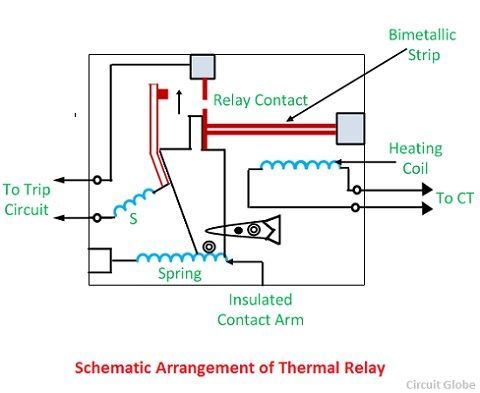The thermal relay works on the principle of the thermal effect of electrical energy. The bimetallic strips, heating coils and the current transformers are the important parts of the thermal relay.
The current transformer supplies the current to the coils of the heater. The thermal energy of the heater coils heated the bimetallic strips. The bimetallic strips are made of the alloy of nickel and steel. The alloy of the nickel and steel has high steel resistivity, and also they are free from thermal ageing.
The insulated liver arm is connected to the trip coil along with the spring and the bimetallic strips. The tension of the spring is varied by the help of the sector-shaped plate.

When the system is in normal operating condition, the spring remains straight. When the fault occurs on the system, the bimetallic spring is heated and getting bent. The tension of the spring becomes releases which trip the relay contacts. The contact of the relay energizes the trip circuit because of which the contacts of the circuit breaker close. Thus, the system remains safe.
The thermal relay is mainly used in the low voltage Squirrel Cage induction motor and in low output rating DC motor. The thermal relay has low overloading capability. It is designed to operate under 6 to 7 times more than the full load current.
Such type of relay is not used under short-circuit condition. The short circuit current increases the temperature of the bimetallic strips due to which the contacts of the relay close. The thermal relay is used with the short circuit relay or with the time limit fuse.
